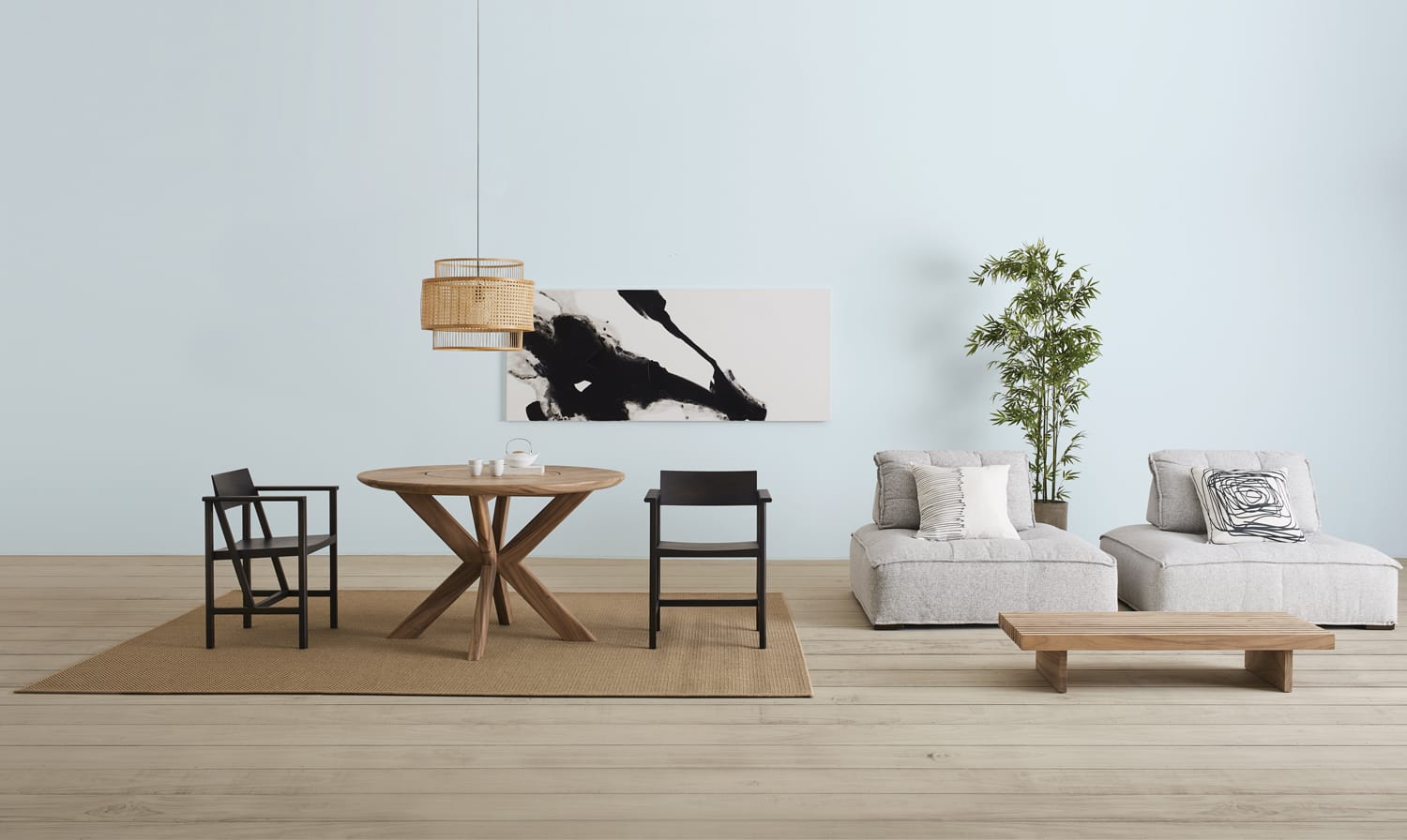Trends
4 New Decoration Trends To Put Well-Being First In Your Home

Photography Mobilia
Trends
4 New Decoration Trends To Put Well-Being First In Your Home
Designing a home that’s both a nurturing environment and beautiful isn’t a new concept, but it’s one that’s taken on even greater significance in the last two years. Whether we’re just noticing our homes more (because we’re spending so much time there) or we’re craving a sense of calm serenity within its walls, we’re increasingly aware that a healthy, harmonious home affects our mental and emotional well-being. If you find yourself moving your favourite chair to capture the sunlight better or dreaming up an entirely new spa-like bathroom, you know what we mean – and we’re with you! For inspiration, we’ve put together an overview of approaches to design that centre well-being, not to suggest you replicate any particular style, but to help you explore the question: what makes you feel happy at home?
Japandi
The marriage of wabi-sabi and hygge or lagom might seem recent, but it’s said that the commingling of Japanese and Scandinavian design goes back to the mid-1800s, when Japan “opened” to trade with the West. It turns out that the two design philosophies are compatible, with their simplified forms, celebration of craftsmanship, thoughtful and judicious choice of decoration, and respect for nature. A Japandi environment (shown opposite) is welcome, especially today, because the aesthetic is calm, comfortable and uncluttered.

Photography, Mobilia
• Why adopt it? A well-curated minimalist environment that also prizes comfort blends the best of both worlds, which seems appropriate for a look that marries two cultures.
• How to get it? Quality furniture that will age beautifully is essential. Objects made from wood or stone, natural fibres like sisal and wool, and accents like unglazed ceramics are preferred. Neutral colours and modern furniture bring a sense of ease.
Wabi-Sabi
This philosophy of life is said to have its roots in Japanese Buddhism and combines two principles: wabi (simplicity, rustic shapes, asymmetry, nature) and sabi (that which is imperfect and is weathered by time). Incorporating wabi-sabi in home decor (shown above) doesn’t mean adhering to a particular look. Instead, it is about being guided by its principles: respect nature (practise sustainability; nurture houseplants); incorporate furniture and accessories with patina; and relax in imperfect comfort with textiles like natural washed linens. “
Comfort is more to do with the way we feel than the way things look.” – Ilse Crawford, Sensual Home (Quadrille Press)

Photography, living4media
• Why adopt it? This thoughtful approach to decorating values simplicity, age, calm and contemplation. It liberates us from an insatiable desire for more and for perfection.
• How to get it? Worn wood furniture, weathered metal, imperfect handmade ceramics (dents and chips are okay!), soft, natural fibre textiles, asymmetrical compositions.
Lagom
You’ve likely heard of lagom. It’s a Swedish word meaning balance and moderation. More than any other approach to decor, lagom (shown opposite) is about being mindful of overconsumption, and creating a personalized environment that promotes happiness and balance in the home.
“Home is our emotional heartland – a place to restore our balance.” – Ilse Crawford, Sensual Home (Quadrille Press)

Photography, living4media
• Why adopt it? If you seek a lighter life where you consume less, where the superfluous is eliminated from the home, and where simple everyday pleasures are prioritized, lagom is for you.
• How to get it? Be mindful; decorate with intention and make sustainable choices. Opt for well-made functional furnishings and a limited colour palette (try Nordic-inspired neutrals like pearly white and stone grey, with soft blues or beiges). Use mirrors to bounce light and create airier rooms. Accessorize with simple reminders of the beauty of nature, like a bowl of seashells or pebbles.
Grandmillennial
The trend to decorate grandmillennial or “granny style” (shown above) is a departure from the more minimalist looks we’ve discussed. Although at first glance it seems like a more-is-more look, at its heart is a similar concern for being a mindful consumer. The vintage and antique treasures that remind us of our grandparents’ homes encourage reusing instead of buying new. But grandmillennial isn’t about creating a period-perfect interior. Though the mood is nostalgic, there’s a millennial twist on tradition. Different periods are mixed, and often a modern piece will give the room a bit of edge. What we’re left with is the warmth and comfort that good memories bring.

Photography, living4media
• Why adopt it? It meets the economical requirements of the Y generation, who face the dual challenges of inflation and soaring real estate prices. More than that, it pays homage to what is familiar and comforting.
• How to get it? Wallpaper, embroidered and fringed cushions, fine china (from vintage shops or inherited), floral motifs (especially those with historical pedigree like the designs of William Morris and Liberty of London), secondhand furniture.














Comments